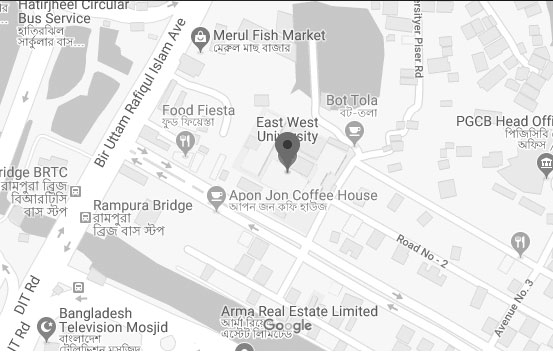- Reversible/Quantum Logic
- Multiple-Valued Logic
- Evolutionary Algorithms
- Graph Problems
- Data Mining
- Machine Learning
- Software Engineering
- Software Product Line Engineering
- BioInformatics
- Natural Language Processing
- Computer Vision
- Data Analytics
- Supply Chain Management
- Formal Verification
On-Going Projects
- Speech Audio to Emotion Detection
- Tea Leaf Disease Detection by using Deep Learning
- Detection of Various Staged of Diabetic Retinopathy from Fundus Images: Bangladesh Perspective
- Deep Learning Based Emotion Detection from EEG Signals
- Alzheimer Disease and Stage Detection from Brain Images
- Designing an Intelligent Chatbot
- Classification and Analysis of Software Defects
- Analysis of Network Intrusion and Detection: Data Mining Approach (Data Mining and Cyber Security)
- Rough Set in Bioinformatics
- Application of Data Analytics in Supply Chain Management
- Data Mining in Bioinformatics, and Disease Diagnosis and Prediction
- Software Product Line Requirement Management
- Recommender-Based Service Composition Verification
- Natural Language Processing
- Universal Networking Language
- Machine Learning
- Internet of Things (IoT)
- Embedded Systems
- Radio frequency identification (RFID)
- Radio wave propagation
- Wireless sensor network
- Wireless communications
- Biomedical and Neurological image processing/imaging
- Bioinformatics
- Optimization
- Artificial Intelligence/Machine Learning
- Deep Learning
- Robotics and Internet of Things
- Green Computing/IT and Sustainable Development
- Brain Machine Interface
- Biomedical signal Processing
- Cognitive radio
- Electromagnetics
- Facial Image Analysis
- Texture Analysis
- Bioinformatics
- Computer Graphics
- Image processing
- Algorithms
- Wireless Networks
Wireless Communications and Networks
- Database Technology
- Data Streams
- Data Provenance
- Semantic Web
- Big Data
- Computer Networks
- Wireless Sensor Networks
- Underwater wireless sensor networks
- Underwater communication and signals propagation
- Localization for terrestrial environment (Tracking)
- Underwater localization (Tracking)
- Deep Learning/ Machine Learning
- Localization algorithm design in Wireless Sensor Network
- Developing Efficient Routing Protocol for IoT devices
- Network Measurement and Performance Analysis in Wired and Wireless (LTE) Network
- AQM Based Buffer Management for eNB in LTE Network
- Energy Efficient Communication Protocol.
- Big data Analysis.
- Wireless Communications and Networks
- Data Communications
- Machine Learning
| Robotics
|
Robotics is a branch of engineering that involves the conception, design, manufacture, and operation of robots. This field overlaps with electronics, computer science, artificial intelligence, mechatronics, nanotechnology and bio-engineering.Science-fiction author Isaac Asimov is often given credit for being the first person to use the term robotics in a short story composed in the 1940's. In the story, Asimov suggested three principles to guide the behavior of robots and smart machines. Asimov's Three Laws of Robotics, as they are called, have survived to the present:1. Robots must never harm human beings.2. Robots must follow instructions from humans without violating rule 1.3. Robots must protect themselves without violating the other rules.Source: Google |
| Sensors and Systems
|
Sensors are sophisticated devices that are frequently used to detect and respond to electrical or optical signals. A Sensor converts the physical parameter (for example: temperature, blood pressure, humidity, speed, etc.) into a signal which can be measured electrically. Let’s explain the example of temperature. The mercury in the glass thermometer expands and contracts the liquid to convert the measured temperature which can be read by a viewer on the calibrated glass tube.Source: Google |
Machine vision |
Machine vision (MV) is the technology and methods used to provide imaging-based automatic inspection and analysis for such applications as automatic inspection, process control, and robot guidance, usually in industry. Machine vision refers to many technologies, software and hardware products, integrated systems, actions, methods and expertise. Machine vision as a systems engineering discipline can be considered distinct from computer vision, a form of computer science. It attempts to integrate existing technologies in new ways and apply them to solve real world problems. The term is the prevalent one for these functions in industrial automation environments but is also used for these functions in other environments such as security and vehicle guidance.The overall machine vision process includes planning the details of the requirements and project, and then creating a solution. During run-time, the process starts with imaging, followed by automated analysis of the image and extraction of the required information.Source: Wikipedia |
Internet of things |
The "Internet of things" (IoT) is becoming an increasingly growing topic of conversation both in the workplace and outside of it. It's a concept that not only has the potential to impact how we live but also how we work. But what exactly is the "Internet of things" and what impact is it going to have on you, if any? There are a lot of complexities around the "Internet of things" but I want to stick to the basics. Lots of technical and policy-related conversations are being had but many people are still just trying to grasp the foundation of what the heck these conversations are about. |
Machine learning, IoT, Linear control, Nonlinear control, Converter design and control
- Expert System
- Internet of Things (IoT)
- Smart City
- Cloud and Edge Computing
- Recommendation Techniques
Data Compression/Encoding - SQL Script Optimization
- RDF Data Storing Techniques
- App Decentralization
- Data Mining
Computer Vision, Natural Language Processing(NLP), Large Language Models(LLM), Semantic Web, Blockchain technology


